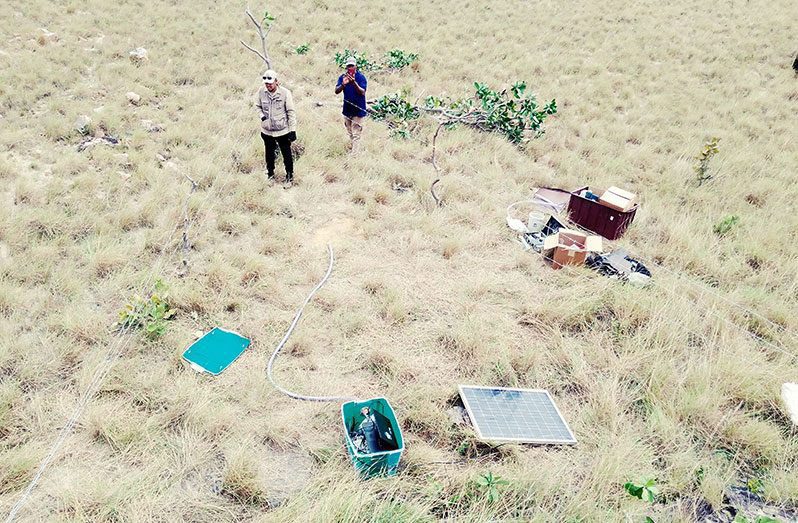– data will be retrieved, studied next week
THERE has been no damage recorded thus far following the second earthquake that struck Region Nine (Upper Takutu-Upper Essequibo) on Friday, according to the Civil Defence Commission’s (CDC)’s acting Preparedness and Response Manager, Major Salim October.
During a telephone interview with the Sunday Chronicle, the major confirmed that the CDC did not receive any reports of damage as was the case when the first earthquake struck the region on January 31, 2021. The earthquake in January had a 5.7 magnitude, while Friday’s earthquake had a magnitude of about 4.7. The second earthquake, according to the Richter scale that characterises the magnitude of earthquakes, is still relatively small. Both earthquakes had a greater impact on the communities of Aishalton, Katoonarib and Sawariwau, in the ‘Deep South’ area of Region Nine.
On Friday, during a telephone interview with this newspaper, the major noted that any earthquake — no matter how minor — is a cause for concern. He explained that Guyana sits on the shelf of a tectonic plate, which is a relatively stable region that is not necessarily prone to such natural disasters. There are some concerns, however, as to why these earthquakes and tremors continue to occur here.
Recently, a multi-stakeholder team installed equipment to monitor seismic activity in four different locations in the south Rupununi area: one close to the epicentre of the earthquake (located somewhere near Katoonarib), and three in surrounding areas, thereby creating a seismic-monitoring network.
Professor at the São Paulo University in Brazil, Marcelo Sousa de Assumpção, who has been working with the team, explained in a recent virtual meeting that most of the aftershocks (or tremors) will occur in the same faults where the original earthquake occurred. These aftershocks can be used to study the properties and the geology of the main shock (the January 31 earthquake).
The professor further explained that an earthquake occurs when the rocks or faults on the earth’s crust can no longer sustain the stress (or pressure) that it has been experiencing for a very long time. At that point, there is a sudden movement, known as a failure, that generates a very strong vibration.
He explained that sometimes, some parts of the fault may still have some stress to release, thereby resulting in the aftershocks. And this has been the case in the ‘Deep South’ area where the fault running across the region has been releasing these aftershocks.
“The seismometers that are deployed are supposed to be doing all the different analyses to determine whether there is a fault line anywhere in the area, and to measure whether there is escalation or de-escalation in the tremors,” Major October also said on Friday.
On Saturday, Major October related that data from the seismic monitoring network will be retrieved over the weekend and sent to the team at the Brazilian university for interpretation sometime next week.
“Sometime next week we should have a good understanding of what took place,” Major October affirmed.
Meanwhile, he gave assurance that stakeholders within the region have a “direct line” that can be used to contact the CDC in the event of any such further occurrences.



.jpg)








